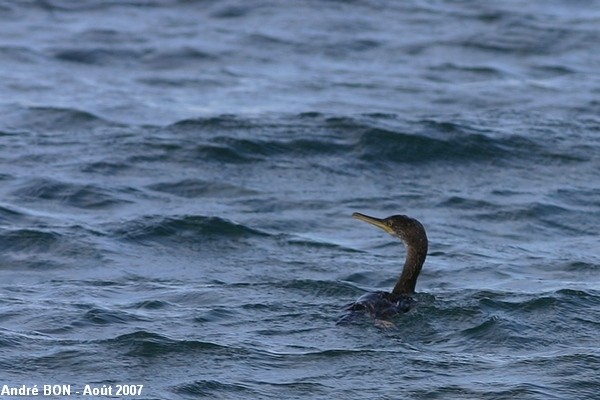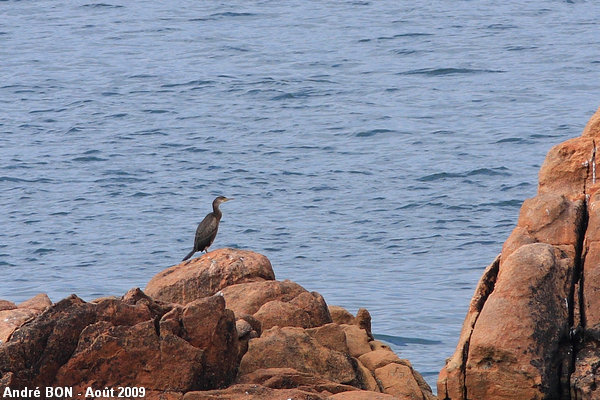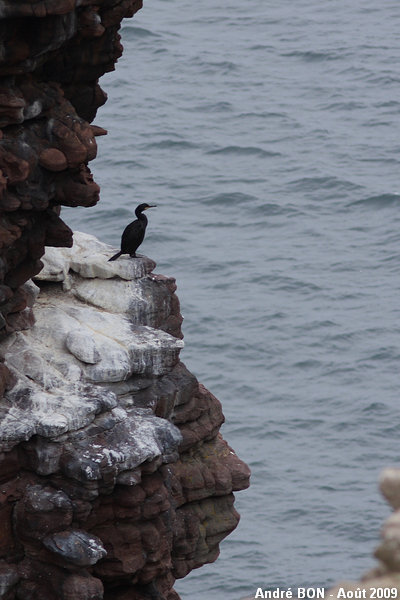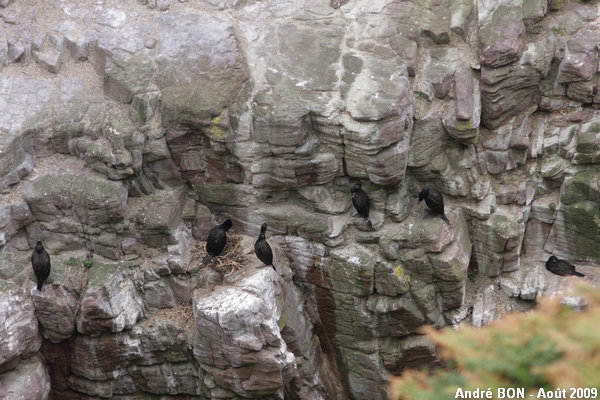



| European Shag (Phalacrocorax aristotelis (Linnaeus, 1761)) |




|
|
Scientific name: Phalacrocorax aristotelis (Linnaeus, 1761) Common name: European Shag Other names: Common Shag French name: Cormoran huppé Order: Suliformes Family: Phalacrocoracidae Size: Body size : 68-78 cm; Wingspan : 95-110cm; Weight : 1,7-2,3 kg. Habitat: The European Shag, unlike the Great Cormorant, is only found near the seaside with a preference for rocky coasts and for rocky coastal cliffs. It is missing in muddy areas. Food: The Great Cormorant is piscivorous. It only fishes in the sea. It catches fishes by diving under the surface. This is one of the deepest divers among the Cormorant species, as much as 45 meters under the sea level. It mainly catches Sand eel and sprat which are not eaten by the Great Cormorant. This prevent to compete with the other species. Nesting: The European shag nests on the ground on rocky ledges, in crevices or caves. The nest is an untidy heap of seaweeds and twigs cemented with guano. Females lay 1 to 6 eggs (often 3) between March and August. The chicks hatch out without down and their parents need to keep them warm. Migration: Sedentary. Geographic area: There are three subspecies: Phalacrocorax aristotelis aristotelis - Atlantic coasts of north-western Europe; Phalacrocorax aristotelis desmarestii - Black Sea coasts and Mediterranean coasts, south-western Asia; Phalacrocorax aristotelis riggenbachi - Western Africa coasts. |
The European shag is a smaller size than the Great Cormorant. The plumage is black with metallic green sheen. In spring, during the breeding season, it bears a short forwards-pointing crest. The hook-tipped yellowish-black bill is narrower than the Great Cormorant's one. |
| [To know more about the European Shag] [Next picture] [Top] |

|
I have observed a small colony of Cormorants on the rocky islands next to the end of the Racou beach at Argelès-sur-mer. Their body size, clearly smaller than the body size of the Great Cormorant that I am used to observing in the Paris area, allows me to think that they are Common Shags of the Phalacrocorax aristotelis desmarestii subspecies. They were too far to take a picture, you should have used a digiscopy equipment. I have seen some boats, like sea kayaks, passing very close without disturbing the birds. I did not try not to loose my camera in the water. The weather became a little cloudy and one of the European shag came to fish in front of me. I have been able to shoot a single picture. The narrow beak confirms the identification. |
| [To know more about the European Shag] [Next picture] [Previous picture] [Top] |

|
Here is a specimen of the Phalacrocorax aristotelis aristotelis subspecies observed on the Bréhat island. I am again a little too far for this observation. |
| [To know more about the European Shag] [Next picture] [Previous picture] [Top] |

|
The rock called "La Fauconnière", next to the près du cap Fréhel, is used as a resting place for many sea birds. And if you want to paint your house in white, hire an European slag. |
| [To know more about the European Shag] [Previous picture] [Top] |

|
The rock called "La Fauconnière", next to the cap Fréhel, is also a nesting site for European Shags. I should have come a little earlier in the season to observe the broods. |